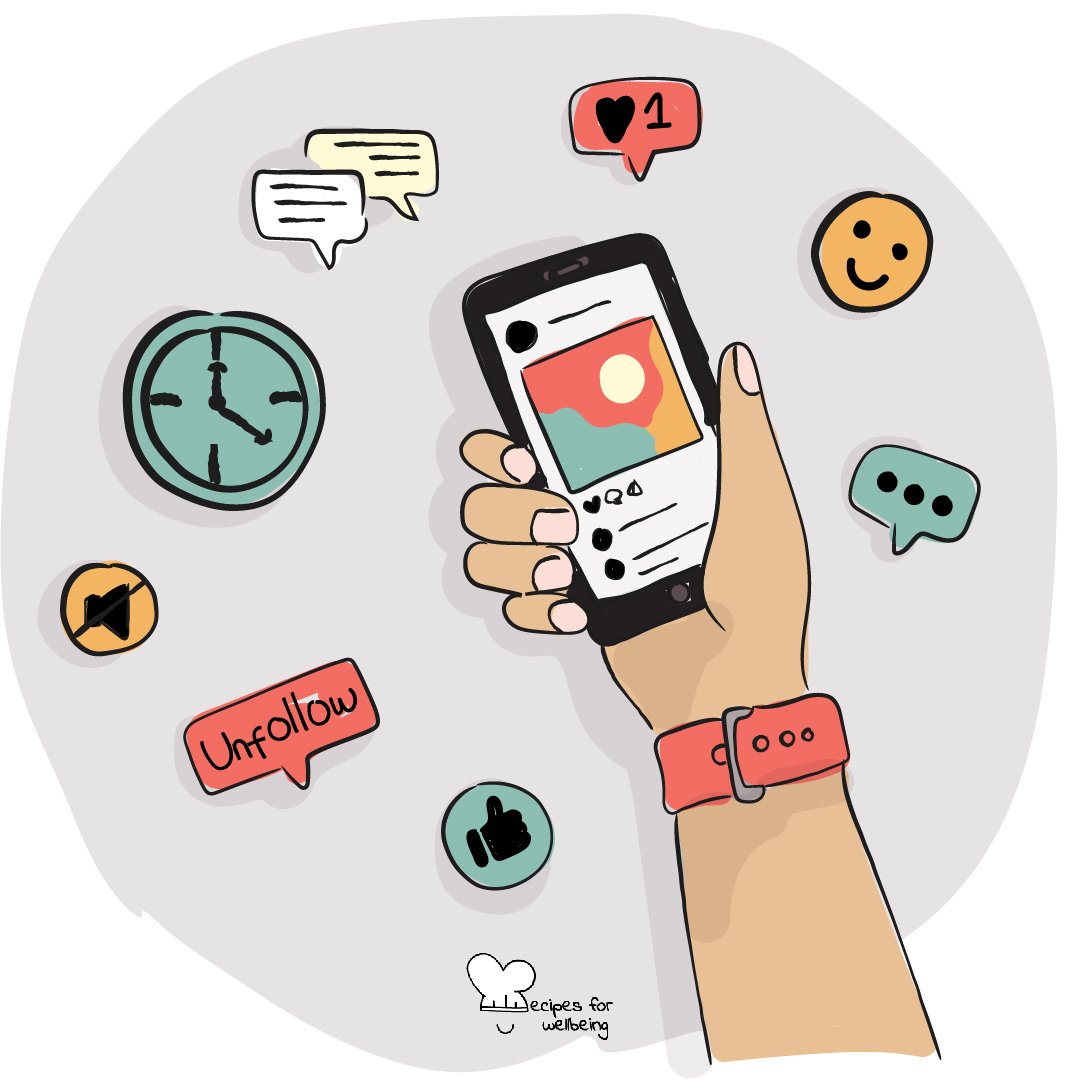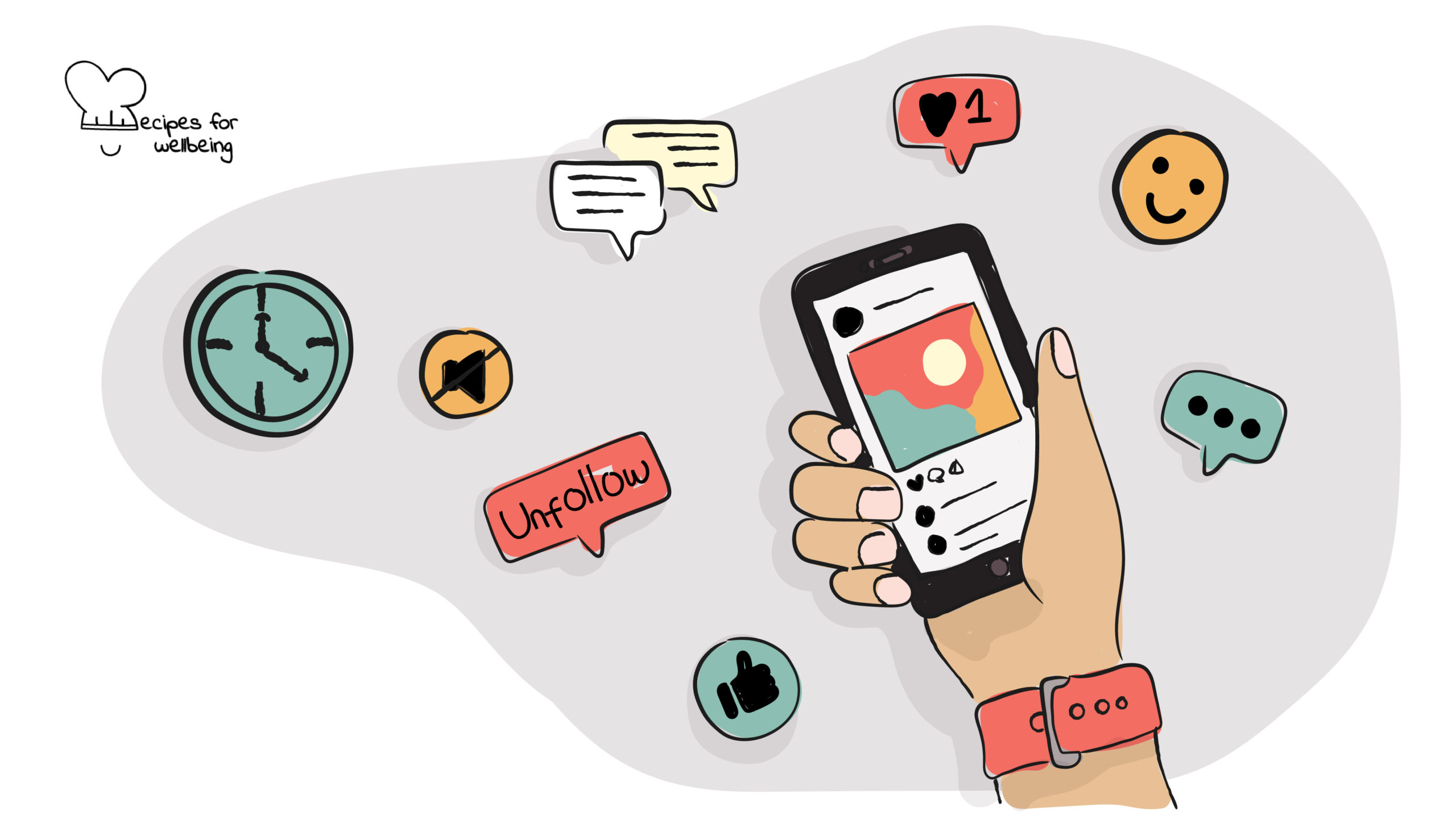
Three ingredients for a healthy digital diet

Three ingredients for a healthy digital diet
1.25 billion years is the total amount of time that humanity combined will spend using the Internet during 2020, according to the new report “Digital in 2020” by We Are Social. I can hardly picture the vastness of that number – just to compare it with Earth’s timeline, 1.25 billion years ago is approximately when the first photosynthesis began. That seems like a very long time ago. To make it easier to understand that number, if you translate it to your lifetime, it means you will be spending more than 40 percent of your waking life using the Internet. That’s right – the world’s Internet users spend on average 6 hours and 43 minutes online each day, according to We Are Social.
And that was before COVID-19 turned our lives upside down, forcing millions of people to work from home and to connect with others through a screen. I wonder if the average time will increase with the COVID-19 outbreak but I fear I already know the answer.
It is now blatantly clear that digital technologies have invaded all aspects of our lives. As someone who lives by herself and who has been in strict lockdown for over two months now, I entirely depend on digital technologies to carry on with my work and to connect with my family and friends. Don’t get me wrong, I am incredibly grateful to digital technologies (and to my Internet connection!) but I am also aware of the negative impact on my mental health, social relations, and performance at work. I know I am not the only one experiencing digital fatigue or struggling to be efficient and productive with a million notifications coming through. This is why I’d like to share three ingredients to boost your digital wellbeing.
But first and foremost, what is “digital wellbeing”? Allow me to use a food metaphor (since we are all foodies at Recipes for Wellbeing). Digital wellbeing is about consuming a balanced and varied diet where digital technologies are feeding your mind, body, heart, and soul with the nutrients they need. To keep your body healthy, you need to consume carbs, proteins, fibers, vitamins, minerals… all in the right proportions. In the same way, you ought to pay attention to the digital food you eat… but do you? Have you ever reflected on the amount of “digital junk-food” you consume – i.e., digital activities that are poor in nutrients, only give you instant gratification, and generate endless cravings? Perhaps it is time to rebalance your digital diet and make sure you’re feeding yourself with delicious and nutritious digital food.
In a moment, I will share three ingredients for a healthy digital diet, but before I do so, please remember that digital wellbeing is essentially an individual choice. There’s no one-size-fits-all diet. In fact, you are unique so you need to evaluate your own relationship with tech and determine whether it is serving you in the best possible way, or if you would like to make changes to your daily habits so that it brings you greater benefits. Ultimately, digital wellbeing is about getting the benefits of technology, without the unwanted distractions. It is about taking an active stance in leading a more balanced digital life so that technology enhances your wellbeing and allows you to achieve your goals and fulfill your life purpose.
1. Self-awareness
Self-awareness is the first ingredient to add to the digital wellbeing pot. Did you know that according to a 2015 Gallup report, nearly half of smartphone users can’t imagine their life without it? At the same time, the American Psychological Association reports that “more than half of employed adults say they check work messages at least once a day over the weekend (53%), before or after work during the week (52%) and even when they are home sick (54%). More than 4 in 10 workers (44%) reported doing the same while on vacation.” Do you recognize yourself in any of these stats? I invite you to take a few minutes to reflect on how often and how much time you spend online and jot down your findings on a sheet of paper. Is your smartphone the first thing you say hello to when you wake up and the last thing you say good night to when you go to bed?
2. Appreciation
After this initial reflection, you are ready to add the second ingredient: appreciation. It’s important to acknowledge that modern society has benefited from many advantages brought on by new digital technologies. Research conducted by Deloitte highlights a few benefits: “Colleagues can easily communicate across geographies, simultaneously reducing expenses, environmental damage, and bodily wear-and-tear. Open source software, search engines, and online shopping services enable us to summon in a few clicks the tools and information we need to be productive. Online maps, global positioning systems, and real-time translation services help us navigate unfamiliar places and communicate with locals.” So, take another moment to recognize, and appreciate, the ways in which digital technologies enhance your wellbeing. For instance, do you use apps to track your sleep, evaluate your level of fitness, or guide you in your meditation? Jot down your findings.
3. Self-compassion
The third ingredient to add to the mix is self-compassion. At this point, it is time for you to look at the ways in which digital technologies have a negative impact on your wellbeing. Think about the hours spent scrolling down social media feeds, the hatred in people’s comments online, the binge-watching… It’s not pleasant to acknowledge all the sugar and unhealthy fats you might have been consuming, that’s why self-compassion is your friend here. As self-compassion expert Kristin Neff explains, “self-compassion provides an island of calm, a refuge from the stormy seas of endless positive and negative self-judgment.” It provides you with the emotional resilience you need to make changes to your digital diet and persevere even when there are hiccups and relapses.
Cook your own recipe
With these three basic ingredients in your pot, you can now explore different recipes, based on what you like and what you need to eat. I invite you to check out Recipes for Wellbeing’s online library of freely accessible “wellbeing recipes,” i.e., activities with step-by-step guidelines to boost individual and team wellbeing (including digital). Also, you might find this 15-minute keynote talk on digital wellbeing I gave at the Social Innovation Summit 2019 helpful to gain a deeper understanding of the whole concept. Finally, I encourage you to join Google’s free online course on digital wellbeing (available in multiple languages), which we contributed to along with other experts in the topic. As Google explains, “each video encourages you to think about how you use technology and suggests ways to find the right balance for you.”
Self-awareness, appreciation, self-compassion are our ingredients – what special flavors will you add to the mix?
This blog post was originally written by Greta Rossi for TwentyThirty – click here to view the original post.

